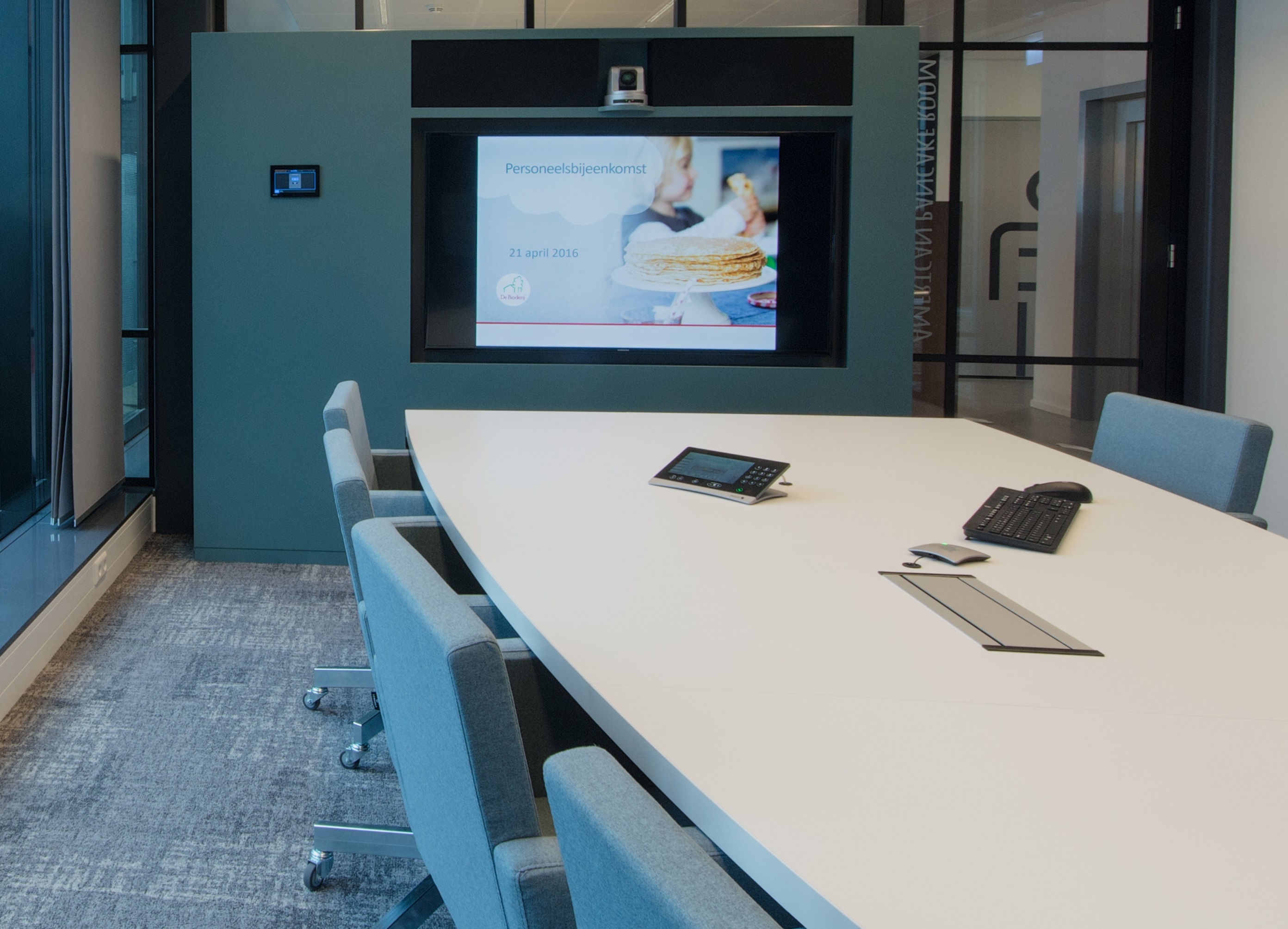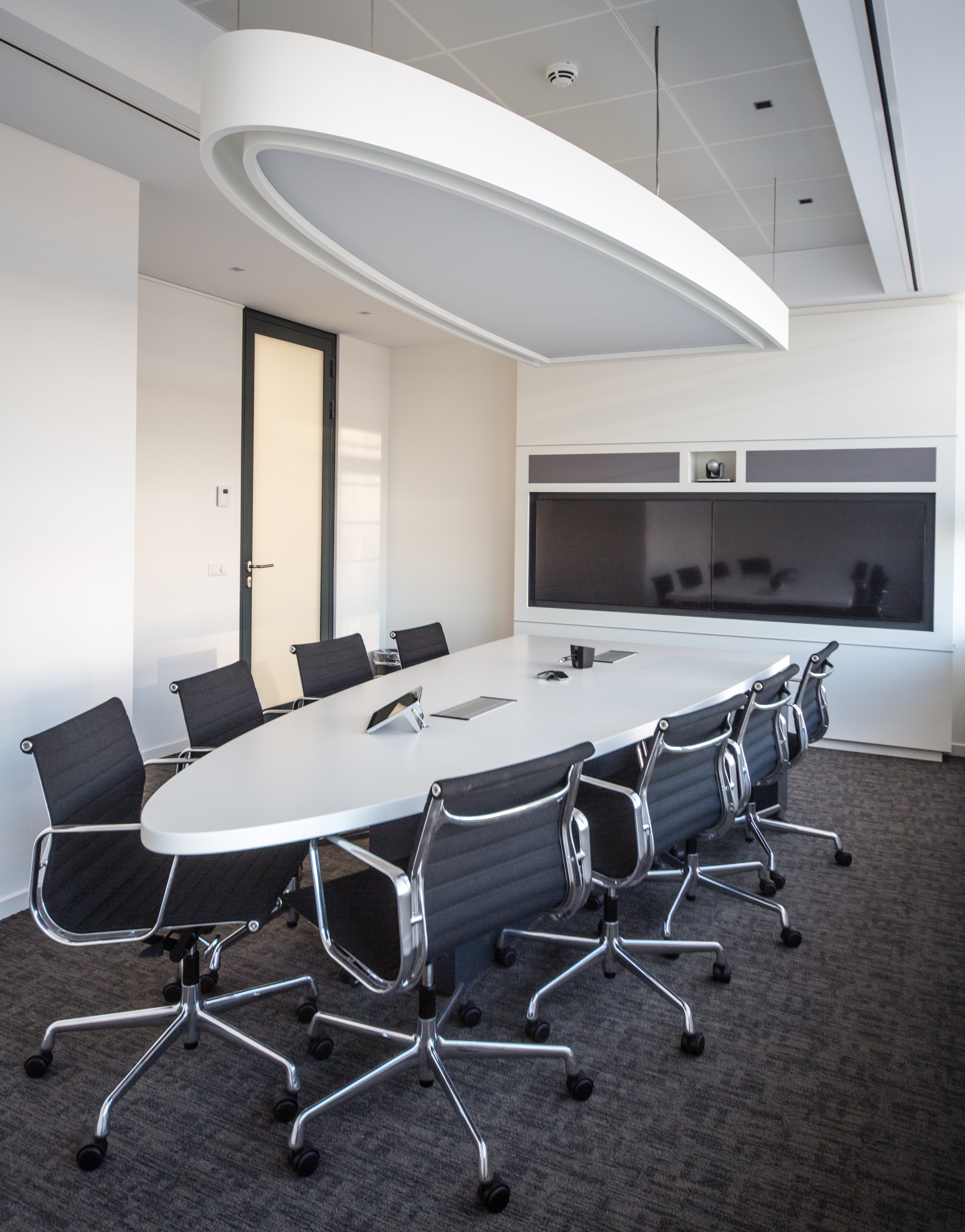News
Six pitfalls when setting up your video conferencing room
10-05-2020 11:27They are found in many organisations. Conference rooms which are modern furnished and have all kinds of facilities to support remote meetings. These so-called video conferencing rooms offer the possibility to easily participate in a group video conference. This clearly offers major advantages.

Video conferencing technology available, but not used
In recent years, I have contributed to the design of such spaces for many organisations, which is my field of expertise. I am often invited to advise on the design of a new room, but unfortunately, I am too often asked to look at spaces where technology for video conferencing has already been installed but not or hardly ever been used in the organisation. And that is, of course, a great pity. Firstly because of the investment, but no less important is the fact that people simply are limited by not having video conferences.
Most of the time, there are recurring mistakes made when designing these types of rooms. Mistakes that could be easily avoided and can make the difference between a pleasant or an uncomfortable meeting. In this blog, I will give you more insight into the six most common pitfalls when setting up a video conferencing room.
1. Using garish colours and/or busy patterns
Bright, garish colours and/or busy patterns on the walls – especially the wall at the back of the room – draw a lot of attention and are distracting. So, preferably, use a fresh, clear and balanced colour scheme. This enhances concentration and attention is drawn to what is being discussed. Participants also stand out better against a uniform background and therefore they are best seen on screen.
2. Using the wrong table shape
 A common mistake is the use of rectangular, square or sometimes oval tables. These standard table shapes obstruct the view of other participants and cause participants to disappear behind the people around them. The camera cannot capture these individuals and they cannot see the screen properly. Therefore, choose a table shape (such as a drop-shaped table) where absolutely everyone is going to be visible. Mobile scissor tables offer a solution if the space is used for both video and regular meetings.
A common mistake is the use of rectangular, square or sometimes oval tables. These standard table shapes obstruct the view of other participants and cause participants to disappear behind the people around them. The camera cannot capture these individuals and they cannot see the screen properly. Therefore, choose a table shape (such as a drop-shaped table) where absolutely everyone is going to be visible. Mobile scissor tables offer a solution if the space is used for both video and regular meetings.
3. The lighting is not adjusted to the activity in the room
 Too bright lighting makes participants look tired; it creates a shadow over the face and gives the impression of having bags under the eyes. Too little light may result in a blurry image and make facial expressions difficult to see. It is much better to use indirect light. This will ensure that both you and your interlocutors look much softer and more natural.
Too bright lighting makes participants look tired; it creates a shadow over the face and gives the impression of having bags under the eyes. Too little light may result in a blurry image and make facial expressions difficult to see. It is much better to use indirect light. This will ensure that both you and your interlocutors look much softer and more natural.
4. Using a table top that reflects light unfavourably
The table top in the room always causes certain reflection of the light. Certain popular wood colours such as pine, birch, oak and mahogany can cause faces to turn yellowish and grey. High-gloss finish cause too much glare. Matte materials absorb more light than gloss materials and are more suitable for video conferencing rooms. Therefore, in addition to choosing the right table shape, consider having a table top with a matte finish in a light, natural colour.
5. Too much focus on the image and too little on sound
Although the main advantage of video conferencing is that the participants can see each other, it is at least as important that they can hear each other well. We often see that when setting up a video conferencing room, the focus is mainly on the type of camera and screen but the audio is taken for granted, whilst good sound audibility is an absolute requirement for successful video conferencing. So pay just as much attention to the audio facilities as to the image, taking the acoustics of the room into account.
6. The lack of a user adoption plan
Even though the use of technological equipment is child’s play nowadays, users naturally have reservations about new things. No matter how nice the room looks, and how easy it is to operate the equipment, there is no guarantee that users will be immediately enthusiastic about that. Think beforehand what challenges you think the users will run into and try to eliminate them. Involve employees, inform them, train them and show them the benefits of the facilities at their disposal.
Conclusion
Experience in the realisation of several hundred video conferencing solutions shows that video conferencing is more than just a camera, a codec and a (secure) connection. By avoiding the pitfalls mentioned above, you will have a video conferencing room that encourages its use. And once your employees get used to using video conferencing, the use will increase further, it will become a standard part of the work routine and will actually contribute to the realisation of the business objectives.
Would you like to know more?
Would you like to know more about the promising possibilities of video conferencing? Let us know via one of the contact options!
